AMD FSR 4 vs Nvidia DLSS 4 at 4K
A few weeks ago,关键字3 we compared FSR 4 to DLSS 4 upscaling for the first time, doing so at 1440p and concluding that FSR 4 is a solid upscaling technology. It's a significant step up from FSR 3.1, often outperforming Nvidia's DLSS 3, although the newer DLSS 4 with its transformer AI model still takes the lead. But how does it stack up at 4K? That's what we'll be exploring today. Examining upscaling at different output resolutions is crucial because upscaling quality can vary dramatically between 1080p, 1440p, and 4K. At higher resolutions, more data is fed into the upscaling algorithm, so output quality is generally better than at lower resolutions. With FSR 3.1, for example, Quality mode upscaling was often usable at 4K but looked rough at 1080p. So, we're interested to see how FSR 4 performs under the most favorable conditions for the technology. All the FSR 4 examples shown in this article were captured at 4K using the Radeon RX 9070 XT, while the other DLSS samples were captured using the GeForce RTX 5090. We used a selection of games with settings like motion blur, film grain, vignette, and chromatic aberration disabled. Sharpness was set to 0 for upscaling. All DLSS 3 examples were updated to DLSS 3.8.10, except for Hunt: Showdown, which remains on DLSS 3.7 as it can't be upgraded. All DLSS 4 examples are using the latest model available via Nvidia's driver override. Let's get into it. One of the most impressive aspects to FSR 4 was its improvement compared to FSR 3.1 at 1440p. The new AI-based upscaler is significantly better at that resolution, even when comparing the Quality modes, and the gap grows wider when comparing Performance modes. At 4K, however, the improvement FSR 4 brings is a bit more nuanced, since FSR 3.1 was already more usable at this resolution. For a better representation of image quality comparisons, check out the HUB video below: There's still a noticeable difference between FSR 4 and FSR 3.1 at 4K using Quality mode, and we believe most gamers will recognize the upgrade FSR 4 provides. Some of the artifacts that were very obvious in the FSR 3.1 1440p footage are less prominent at 4K, so the improvement isn't as dramatic. For instance, FSR 3.1 in 4K Quality mode can appear slightly grainy in areas like hair and transparencies, but it's nowhere near as problematic as it is at 1440p, where these elements often look broken or distracting. Across the entire image, FSR 4 delivers better sharpness, clarity, and a higher perceived resolution compared to FSR 3.1. Fine details like grass are visibly improved, transparencies are much cleaner, hair is rendered more accurately, and there's far less shimmering. Some of the most problematic titles for FSR 3.1 – such as Ratchet & Clank: Rift Apart – see a significant upgrade with FSR 4, particularly in terms of image stability. This gives the FSR 4 output a more genuine 4K feel, whereas FSR 3.1 still looks like the game is running at a lower resolution, despite the "4K" output. The difference becomes even more apparent when comparing the Performance modes. Even at 4K, FSR 3.1's Performance mode struggles. FSR 4 holds up much better – it's less grainy, more stable, and in many scenarios, actually quite usable. In fact, if you were previously using FSR 3.1 in Quality mode at 4K, switching to FSR 4's Performance mode will likely be an upgrade in most situations. That's how much progress has been made. For a better representation of image quality comparisons, check out the HUB video below: This is clearly visible in a clip from Spider-Man 2, which demonstrates how FSR 4 enables better performance on new RDNA4 cards in realistic, playable conditions – since you can now use FSR 4 Performance instead of FSR 3 Quality. For the rest of this article, we're going to compare FSR 4 to DLSS, as that's where the more interesting battle lies. FSR 4 easily outperforms FSR 3.1, but just like we found at 1440p, there's a lot more nuance in how FSR 4 stacks up against DLSS 3 and DLSS 4. We won't go through every example from the previous 1440p comparison – instead, we'll focus on a few tests to verify whether those findings hold true at 4K. For a better representation of image quality comparisons, check out the HUB video below: One of the standout strengths of both FSR 4 and DLSS 4, as seen at 1440p, is their ability to reduce or eliminate motion blur associated with TAA. This benefit carries over to 4K as well. However, relative to DLSS 4, FSR 4 is a bit less impressive at this resolution than it was at 1440p. At the lower resolution, FSR 4 in Quality mode often looked clearly better than DLSS 3, falling somewhere between DLSS 3 and DLSS 4. At 4K, DLSS 4 is a bit more impressive, and in similar examples, FSR 4 appears closer to DLSS 3, though usually still superior. We believe this is because the blur that TAA-based technologies introduce in motion is less noticeable at 4K than at 1440p. With DLSS 3 in particular, the difference between still and moving images is smaller at higher resolutions. DLSS 4 preserves texture quality extremely well. FSR 4 doesn't quite match that level, but even in less favorable conditions, it typically matches or exceeds DLSS 3 in texture detail. This holds true in both Quality and Performance modes. Even if it doesn't quite match DLSS 4, FSR 4 still offers strong clarity and sharpness when gaming at 4K. If you're playing on a 4K monitor, you expect detailed visuals, and FSR 4 delivers that, addressing the blur issues seen in earlier AMD upscalers. For example, Performance mode is now quite usable in terms of texture quality, delivering results close to Quality mode when it comes to reducing TAA blur – something we previously wouldn't have recommended at all. When it comes to image stability, FSR 4 performs better at 4K than it did at 1440p. During 1440p testing, FSR 4 was sometimes less stable than DLSS 3, and in some odd cases, the Balanced mode offered more stability than Quality mode. At 4K, that inconsistency disappears. For a better representation of image quality comparisons, check out the HUB video below: In general image stability, FSR 4 is typically on par with DLSS 3 when both are using Quality mode. While FSR 4 doesn't match DLSS 4's rock-solid presentation, the quality is still very usable and there's no significant increase in shimmering compared to DLSS 3. Thanks to the higher resolution, visual artifacts like shimmering and sizzling are also less visible at 4K, enhancing overall image stability. We also found stability levels between the Quality and Balanced modes to be similar, or slightly in favor of Quality mode – unlike at 1440p, where Balanced sometimes behaved better. Some of the artifacts seen earlier, such as aliasing on brick textures in The Last of Us, are either far less noticeable or completely eliminated at 4K with FSR 4. This leads to a visibly cleaner image and improves competitiveness with DLSS. This improved stability also benefits tricky elements like grates and meshes. FSR 4 performs quite well here, and we even observed examples where it handled these better than DLSS 4. This is likely due to FSR 4 exhibiting fewer disocclusion artifacts – something we noticed at 1440p that's also present at 4K. Around moving characters in third-person games or near mesh fences, FSR 4 shows less sizzling and graininess. Of course, how visible these effects are depends on the game, the movement, and the quality settings used. We were also impressed with FSR 4's Performance mode, which often provides greater stability in motion than DLSS 3's Performance mode, placing it somewhere between DLSS 3 and 4. DLSS 4 still offers the most stable and highest-quality image overall, but the fact that FSR 4's Performance mode is now more usable than DLSS 3's is a significant achievement. Depending on the game, it's easy to justify using Balanced or even Performance mode with FSR 4 – something we absolutely couldn't say about FSR 3. The main downside of the lower FSR 4 modes is a loss of fine detail. These modes can smooth or eliminate subtle textures in an effort to maintain stability, and this is most apparent when compared to DLSS 4, which retains both stability and fine detail. FSR 4 still performs reasonably well in reconstructing fine details at 4K, but for the cleanest image, sticking to the higher quality modes is recommended. One of the biggest improvements FSR 4 brings over FSR 3 is in rendering transparencies, and this holds true at 4K. FSR 4 now matches DLSS when handling effects like holograms and fire – it's no longer the garbled blurry mess seen in older versions. Particle effects and rain also hold up well at this resolution. For instance, snow in Horizon Zero Dawn looks quite good, even in Performance mode, when compared to DLSS 3 and 4. Scenes that previously looked painful using low FSR settings are now much more pleasant to view. Lastly, we looked at foliage quality. Just like at 1440p, FSR 4 delivers excellent grass quality at 4K, falling between DLSS 3 and DLSS 4. In some games like Ratchet & Clank and Hunt: Showdown, FSR 4 appears less grainy than DLSS 3 when using Quality mode. In others, like Horizon Zero Dawn, the results are very close to DLSS 4. For a better representation of image quality comparisons, check out the HUB video below: Previously, one criticism we had was that tree stability in FSR 4 could be worse than DLSS 3, despite offering a sharper image. That issue is less pronounced at 4K, where overall stability is improved. In the worst-case scenarios, FSR 4's tree rendering now generally matches DLSS 3, which is a solid result – though DLSS 4 still delivers the best tree upscaling. Even with the finest details, like thin, leafless branches, FSR 4 can be slightly more stable than DLSS 3, although this sometimes comes at the cost of fine detail when stationary. This holds true in both Quality and Performance modes, once again showing that FSR 4 maintains solid performance even in lower settings – something we couldn't have said about earlier versions of the technology. In terms of FPS performance, there's really nothing new here that wasn't already covered in the 1440p analysis. We tested FSR on the RX 9070 XT and DLSS on the RTX 5070 Ti – both of which deliver similar performance, or at least as close as we can get with the current GPU lineups. The same four games from the previous comparison were tested at identical settings, with this round focusing on the geometric mean of the results. At 4K, the performance trends closely mirror those at 1440p: the performance uplift provided by FSR 4 is comparable to what DLSS 4 delivers. FSR 4 in Quality mode showed a 35% performance improvement over native TAA on the 9070 XT, while DLSS 4 Quality mode delivered a 31% gain on the 5070 Ti. Balanced modes were nearly identical in uplift, while Performance mode ran slightly faster on the DLSS 4 side. Both upscalers are slightly more demanding than their predecessors, but the added overhead is worth it given the visual improvements we're seeing from FSR 4 and DLSS 4 over FSR 3 and DLSS 3. As was to be expected, AMD's FSR 4 is more stable at 4K than it was at 1440p, allowing it to either match or outperform DLSS 3 in most scenarios. At 1440p, there were a few instances where FSR 4 lagged behind Nvidia's last-gen upscaler, but those are much less likely at 4K. In terms of image quality, FSR 4 firmly slots between DLSS 3 and DLSS 4. While DLSS 4 remains more stable and detailed – with an even sharper presentation than at 1440p – FSR 4 is now very competitive, especially for those who previously considered DLSS 3 "good enough." We also see a substantial upgrade from FSR 3.1 to FSR 4 at 4K. Image detail and stability is much better when using the Quality modes, and it's a night and day difference using the Performance mode. In fact, if you previously found FSR 3.1 Quality mode acceptable for 4K gaming, you'll likely find FSR 4 Performance mode to be an upgrade – it's that much better. For most players, FSR 4 Quality or Balanced modes will provide a great experience across a wide variety of games. And while Performance mode doesn't get as strong a recommendation at 4K as DLSS 4's equivalent, it's still acceptable for those seeking extra FPS. The Balanced mode in FSR 4 is now a legitimate option, and the Quality mode is clearly improved. While AMD has done a great job bringing FSR 4's visual quality up to scratch, there's still concern about game support. AMD now needs to accelerate adoption to match DLSS 4's reach. At least for the foreseeable future, this will remain a key consideration when choosing between Radeon and GeForce GPUs. DLSS is simply supported in far more titles, and it's unreasonable to expect hundreds of FSR 4 game updates straight away. What's been frustrating, however, is the slow rollout of FSR 4 updates for games that should already support it. AMD must whitelist titles in their driver to enable the FSR 3.1 to FSR 4 upgrade toggle – and ideally, this should happen in day-one drivers. Unfortunately, that hasn't been the case, leaving Radeon 9000 series buyers without immediate FSR 4 support in major releases. AMD claims they validate FSR 4 quality before enabling it in drivers – but let's be honest, day-one support is crucial. These checks should be completed before launch, and driver updates should consistently add new titles. The latest driver, version 25.3.2, supposedly added support for AC Shadows, but that didn't include FSR 4 driver upgrades – a critical feature. If AMD can streamline game support and start releasing timely driver updates that enable FSR 4 in 2025 releases, they'll be in a strong position to compete in the upscaling landscape, especially now that FSR 4 upscaling is excellent at both 1440p and 4K at various quality settings.
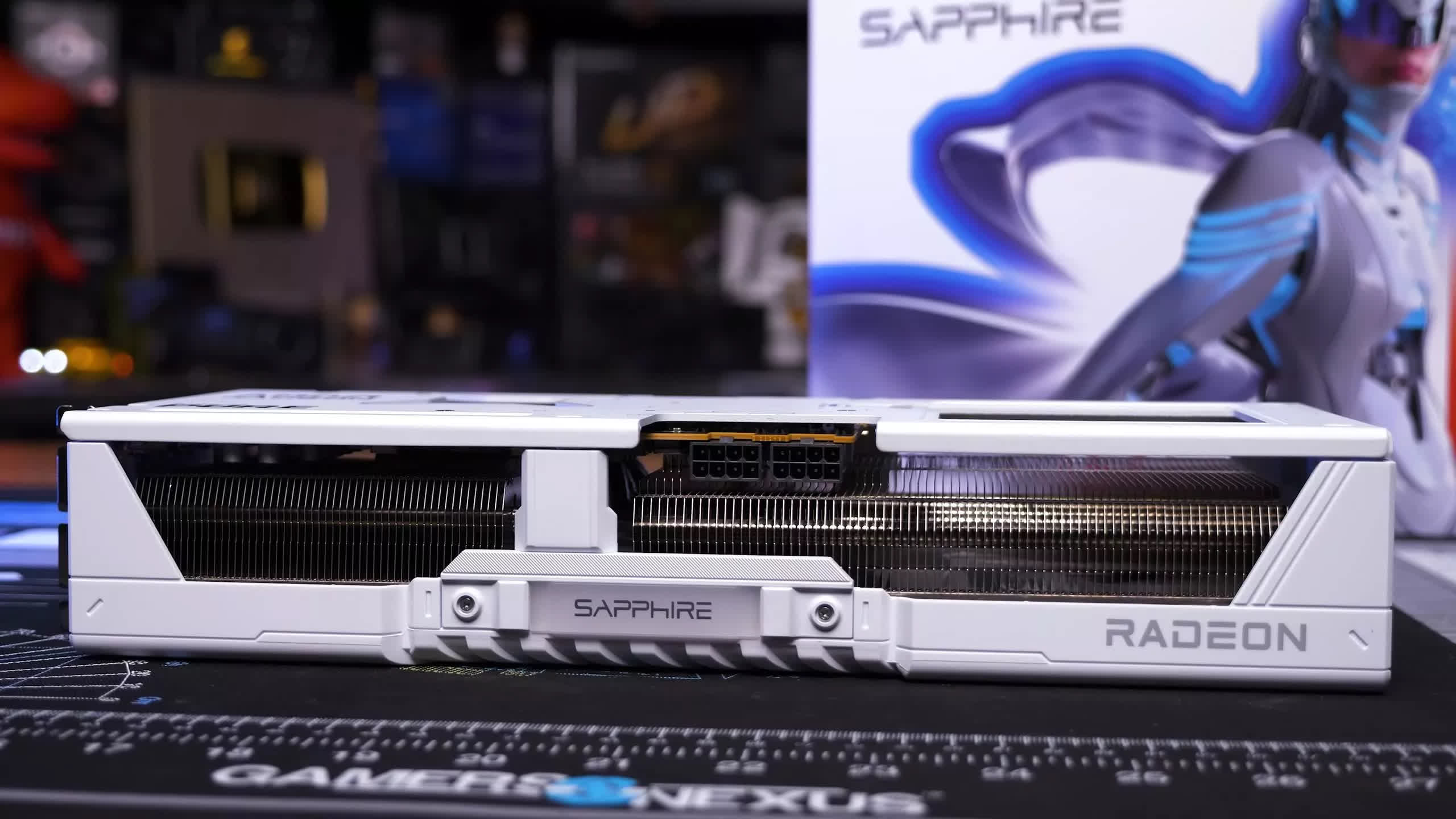
FSR 4 vs FSR 3.1 at 4K



FSR 4 vs DLSS: Texture Quality

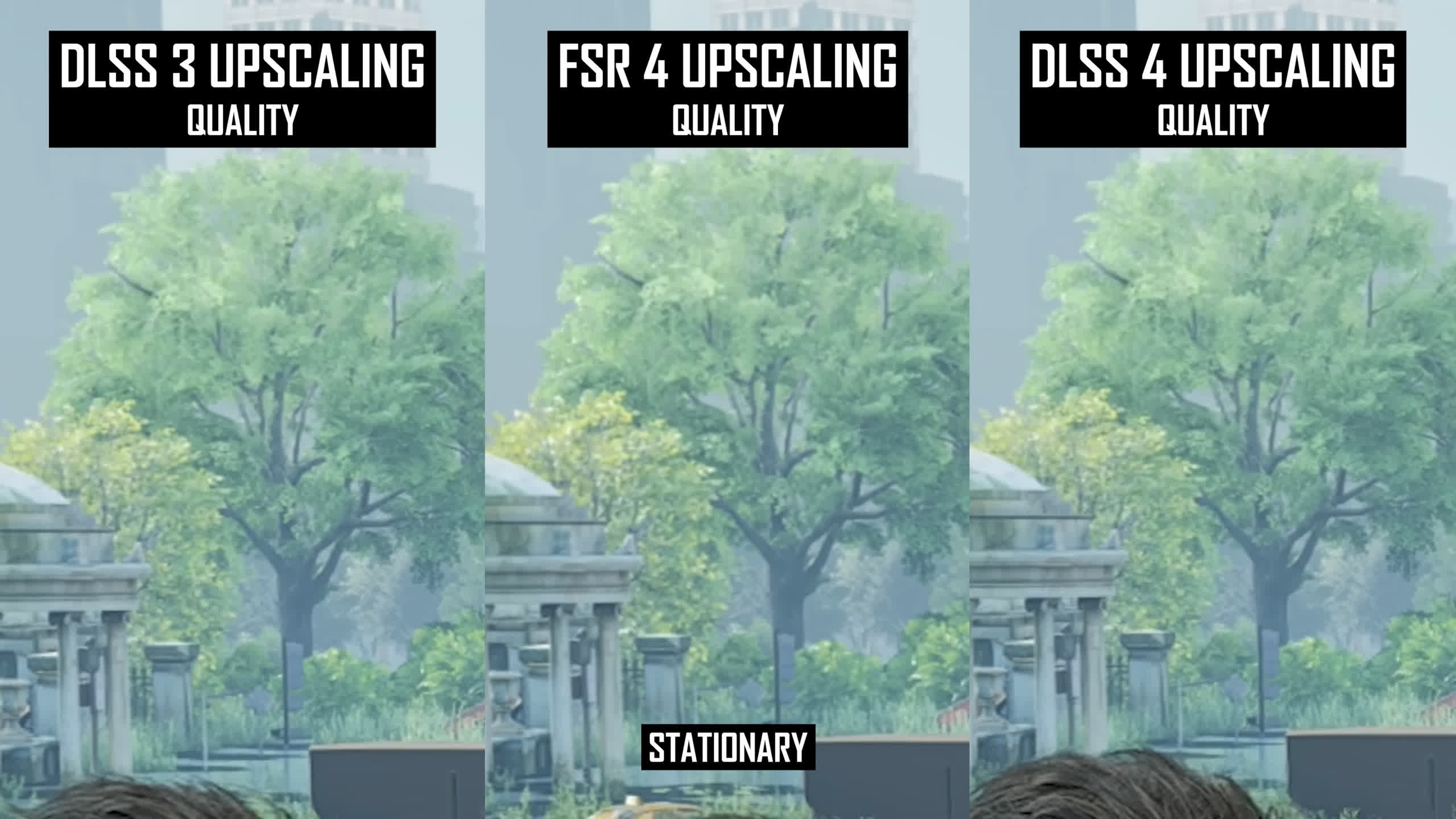
FSR 4 vs DLSS: Image Stability


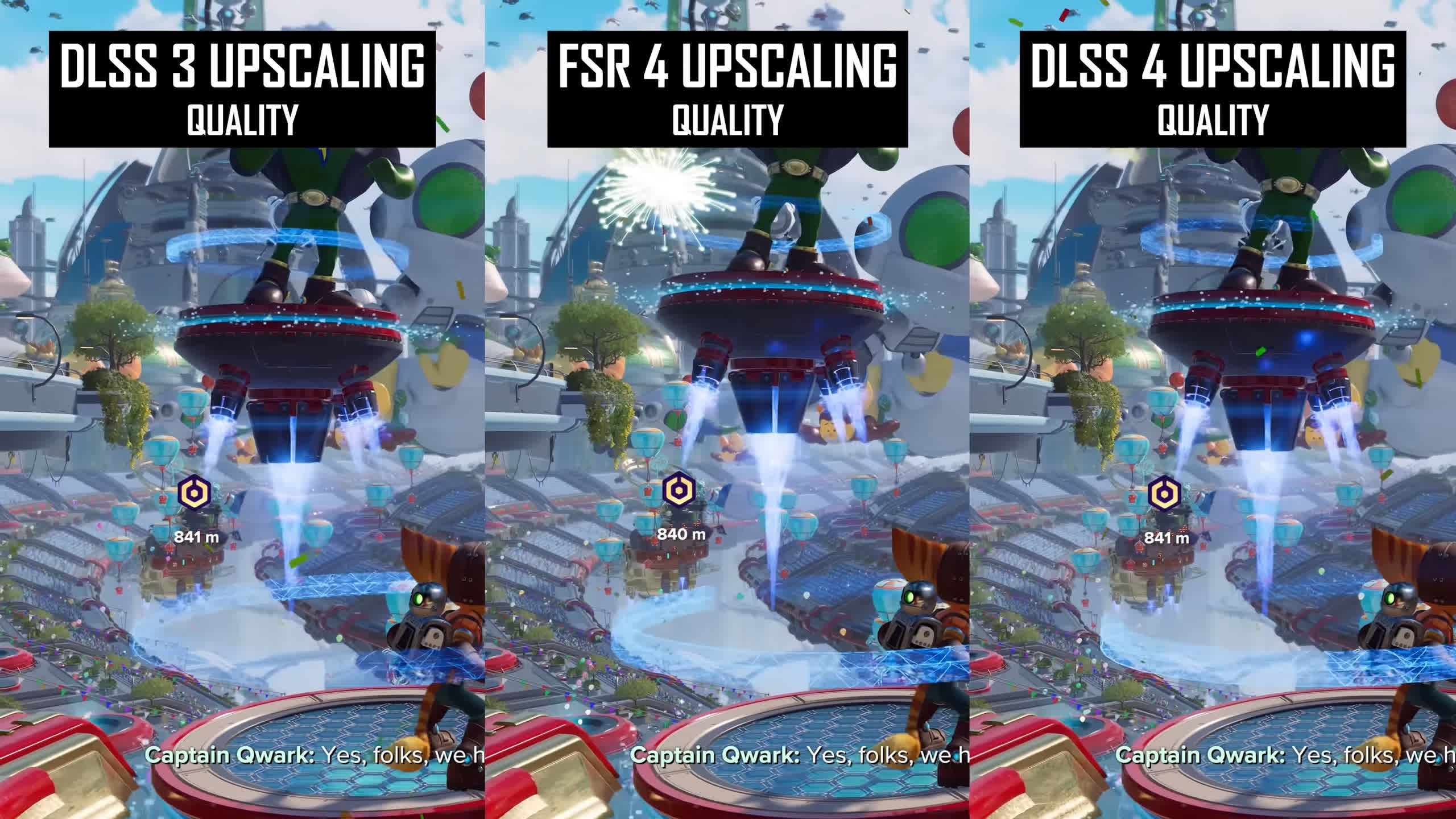
FSR 4 vs DLSS: Foliage Quality

Performance
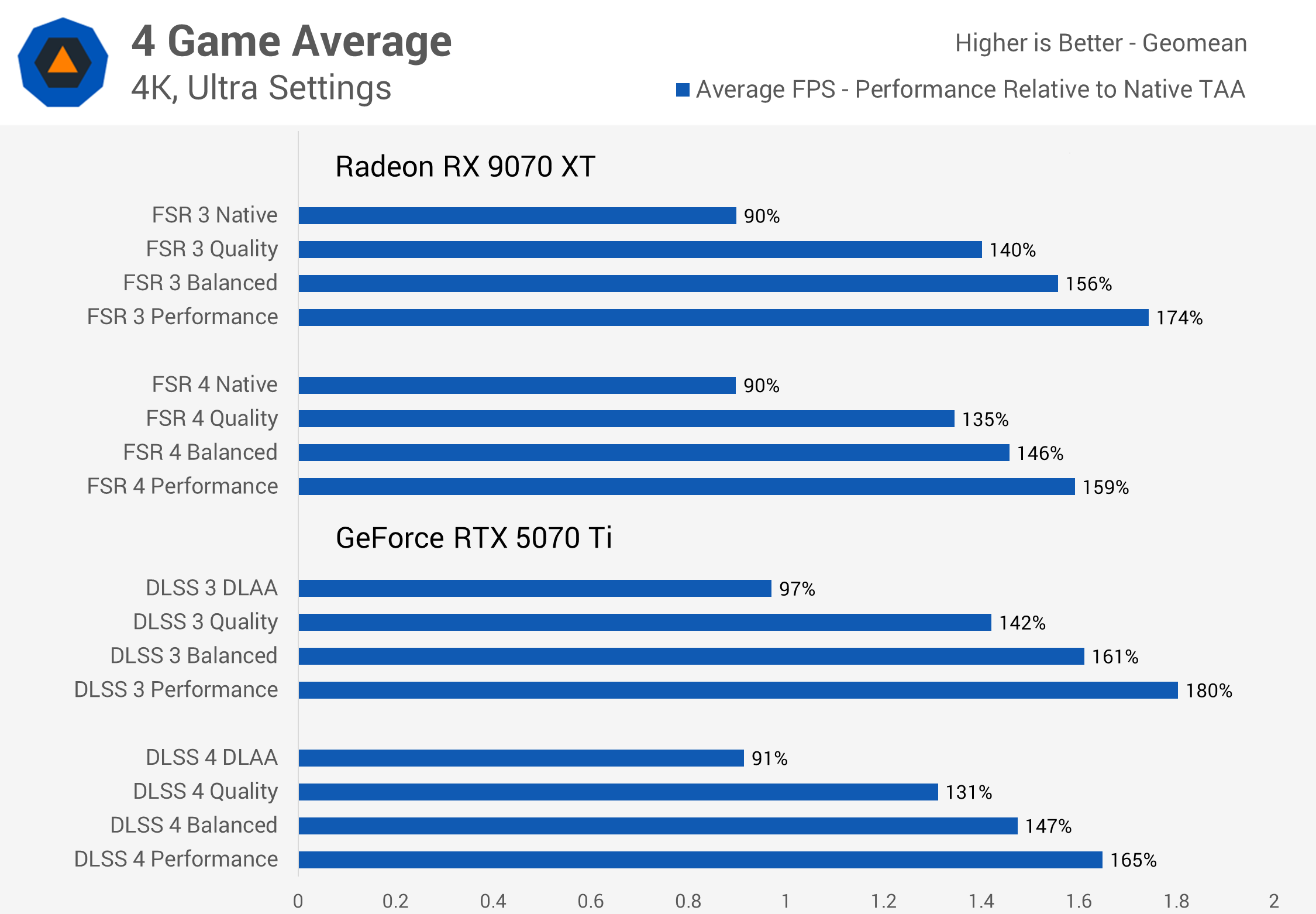
What We Learned
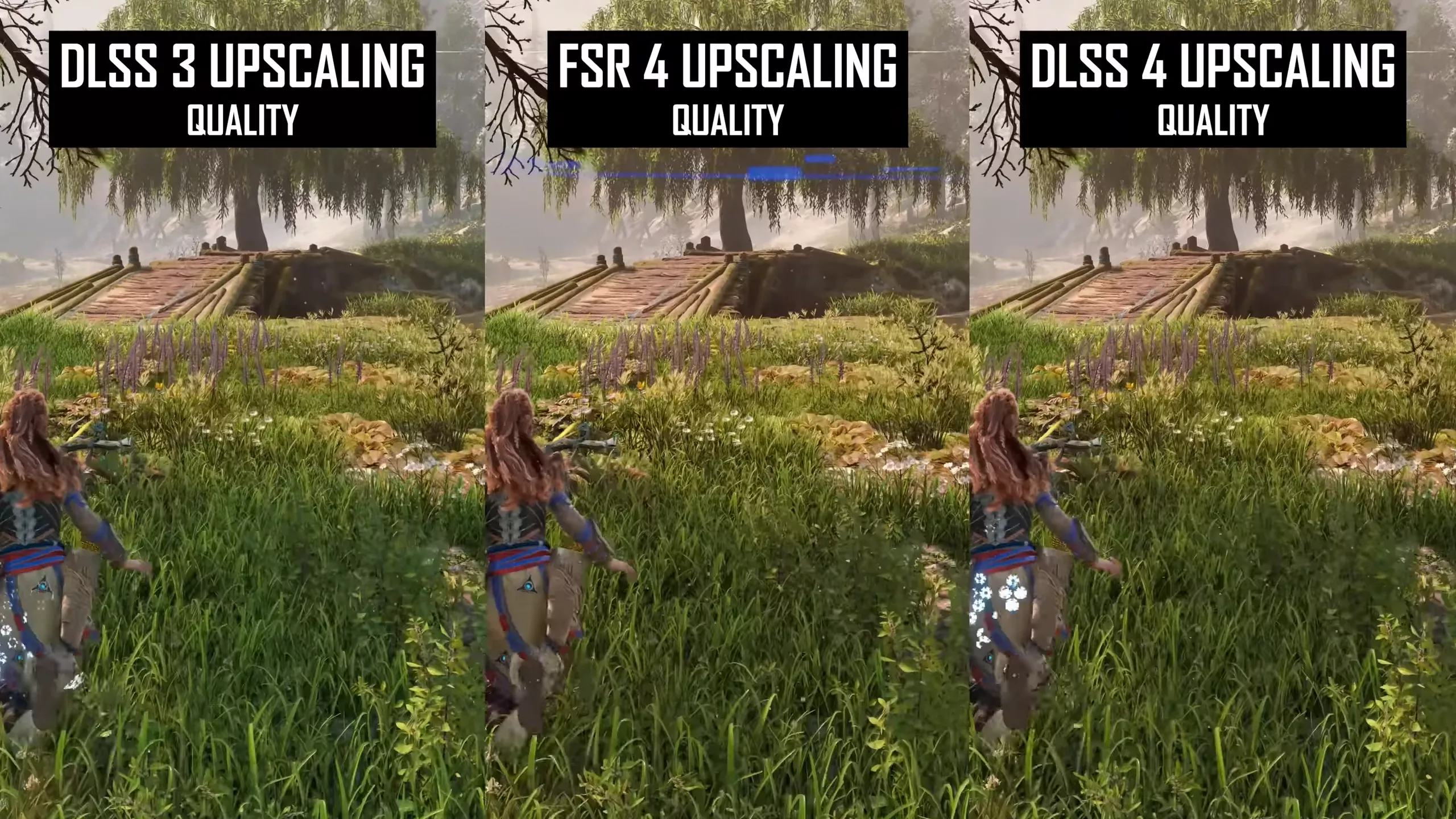
FSR Game Support Still Lags Behind
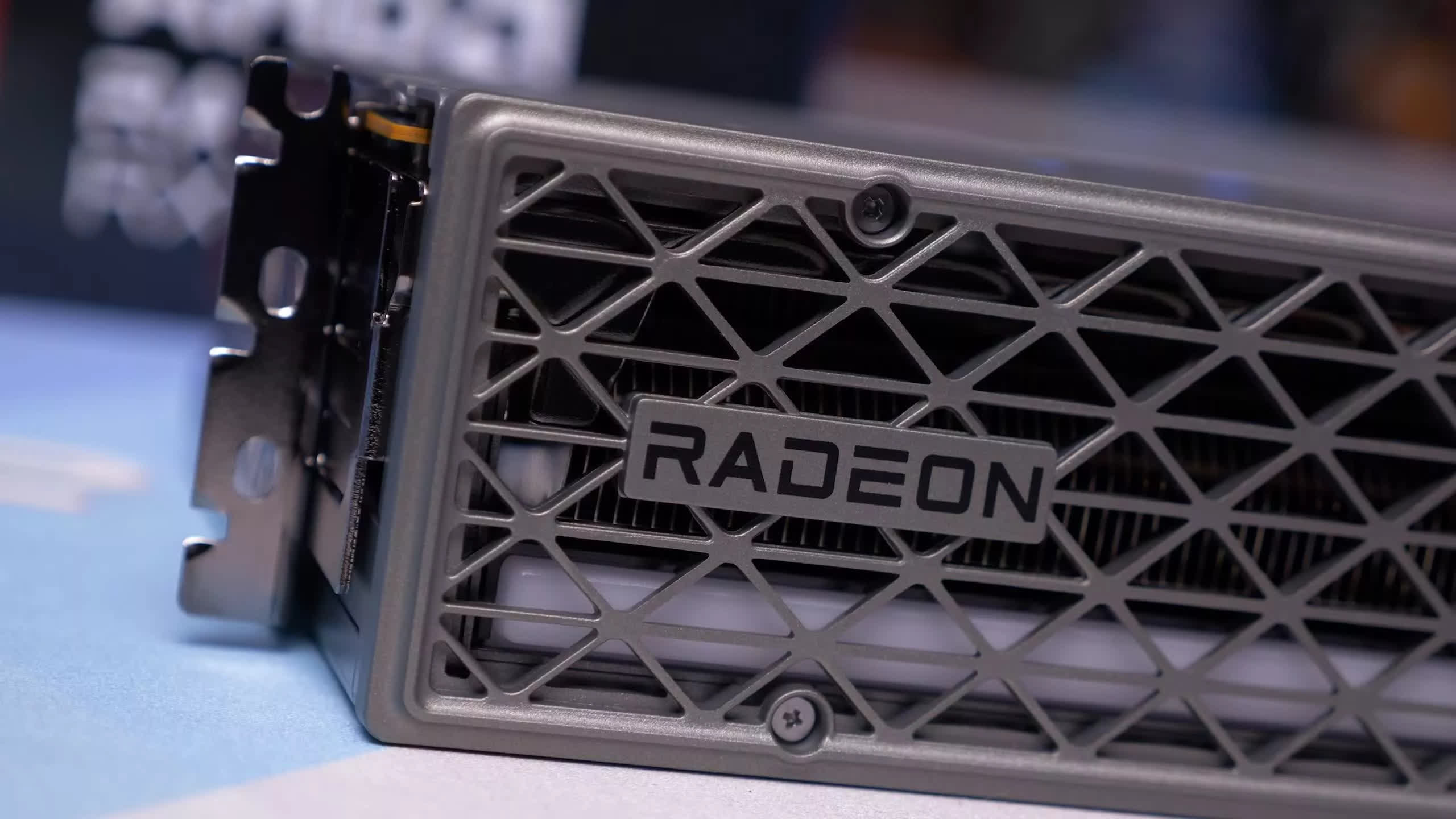
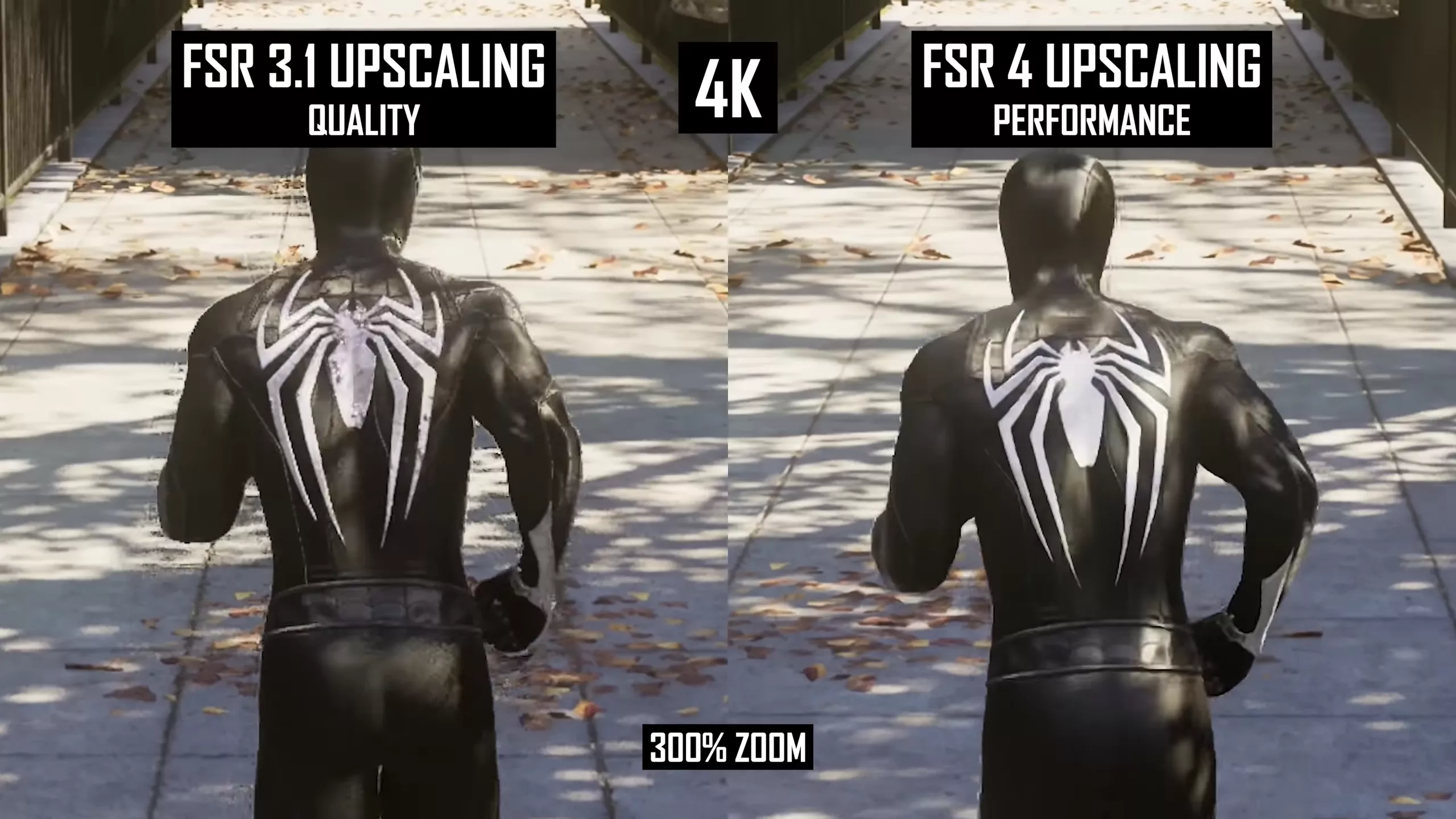
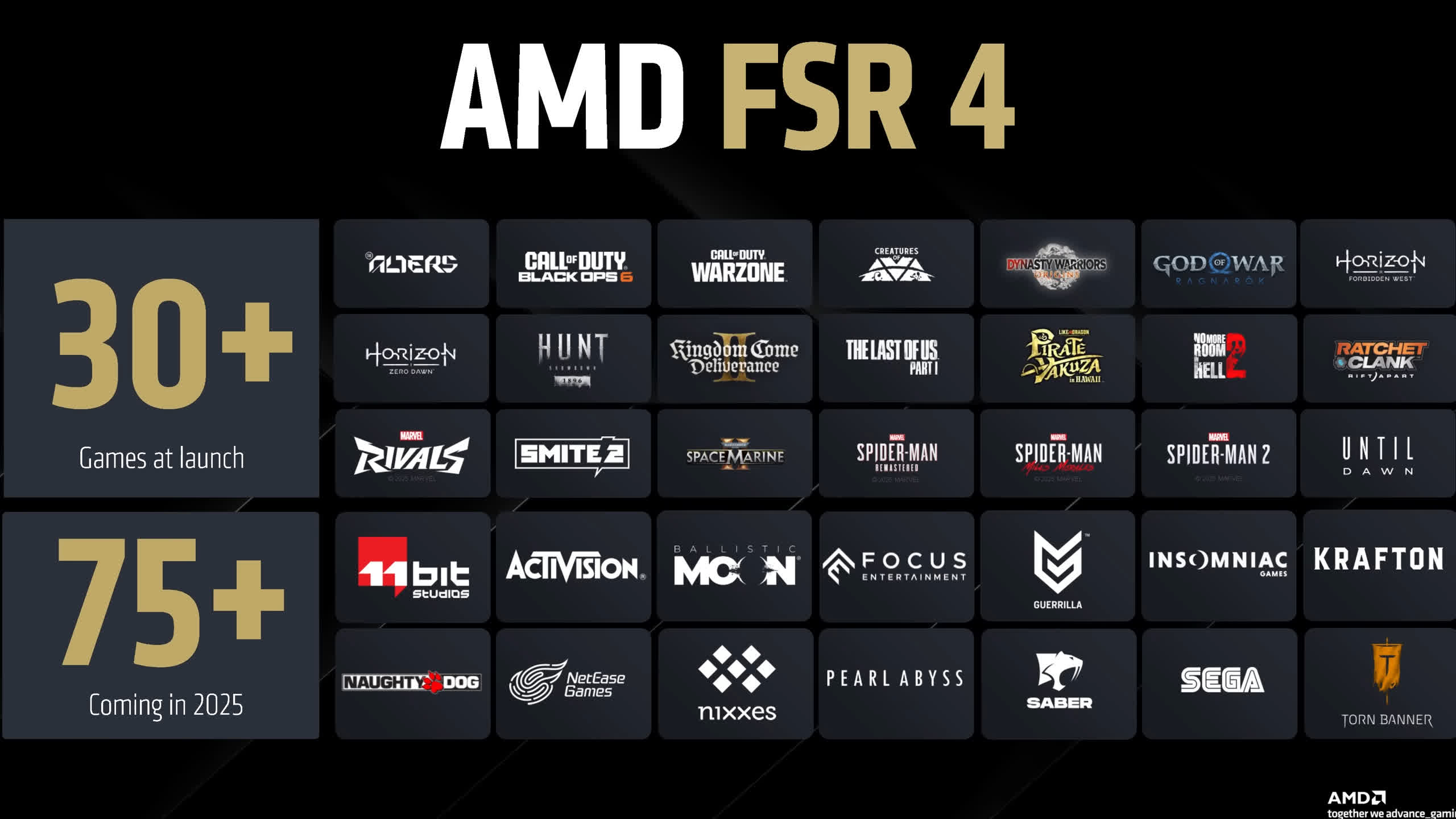
- 最近发表
-
- It’s a Scorching Summer in Call of Duty: Mobile Season 7 — Heat Wave
- dnf手游65版本搬碳去哪 dnf手游65版本炉岩碳去哪搬
- 西牧乳业被通报 超过1.8万罐奶粉使用过期原料
- 2025 WSOP诞生扑克界新传奇!父子同框夺冠!
- 用最简单的方法做出美味肉荤:腐竹红烧肉
- U.S. trade court blocks President Trump from imposing tariffs (updated)
- 轻松大世界,全英雄免费送!剑与远征: 启程全平台公测定档8月8日
- 莱加内斯和西班牙人将于西甲联赛第38轮决出最后一支降级球队
- 法院判决“脱粉收容所”向张元英所属社Starship赔偿5000万韩元
- Epic老大:单机游戏未来融入元宇宙销量才高
- 随机阅读
-
- 《塞尔达传说:旷野之息》快速刷流星方法
- 科技助力垃圾分类:构建绿色未来的智能解决方案
- 2025 WSOP诞生扑克界新传奇!父子同框夺冠!
- 高一物理期末工作总结
- [流言板]无缝衔接!多名NBA球星已开始追求詹娜,公牛球哥领衔
- NYT Connections hints and answers for June 10: Tips to solve 'Connections' #730.
- 英语作文300字10篇【通用】
- MAC电脑下安装软件提示来自身份不明开发者的解决方法
- 非氪金玩家也可变土豪《醉武侠》可得元宝
- dnf手游65版本搬碳去哪 dnf手游65版本炉岩碳去哪搬
- 英语作文300字10篇【通用】
- One Big Beautiful Bill Act contains a very unpopular AI provision
- 关注药品带量采购:原研药让出位置 仿制药占上大头
- เปิดตลาดทองคำปรับลง 50 บาท รูปพรรณขายออก 52,100 บาท
- 人教版七年级上册六单元作文:人类起源概说
- 步行者再现魔法大逆转 雷霆赢了47分钟最后输在哪?
- 攻高皮薄的法师如何利用优势快速升级
- 山西鑫和电控设备有限公司
- “和力家园”成第二匹进军200万育马者杯决赛的两岁马!目前4战1冠1亚1季
- 快乐的六一儿童节作文[通用]
- 搜索
-
- 友情链接
-